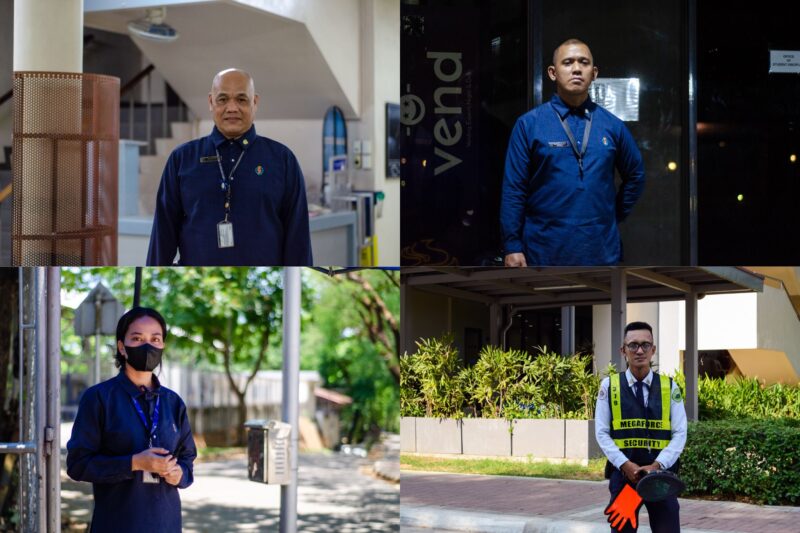It’s a story everyone has seen before: A poor girl from a struggling family has a lot of heart, but not enough money. Across town, a cold-hearted boy has everything he could ever want, but is missing the light in his life.
This is a premise many viewers have watched unfold across their television (TV) screens. It’s an extremely popular trope, not just with Filipino teleseryes (Filipino soap opera), but also with the increasingly popular Korean dramas (K-dramas).
Today, the practice of dubbing has enamored Filipino audiences, who now subscribe to teleseryes and dubbed foreign shows in almost equal measure. While critics roll their eyes at the mention of the practice, some argue that “Filipinized” shows can serve as a unifying and even liberating medium, bringing admirers of the art form closer together.
Running diagnostics
From its inception, the soap opera has been a defining piece of everyday entertainment. Even as the technologies used to broadcast it died one by one, the demand for soap operas survived. The form has transcended multiple mediums: Radio, television, and in recent times, digital on-demand streaming.
The soap opera’s pervasive nature has allowed it to penetrate many cultures, and the Philippines is no exception. The local incarnation of the soap opera, called the teleserye, has become an indispensable fixture in the national consciousness. TV stars have risen, fallen, and even died, yet the teleserye remains deep-seated.
Today, however, the teleserye has ceded some ground to dubbed foreign shows. “A soap opera is a narrative in service of economic interest,” says Louie Sanchez, an English Department lecturer and literature critic. According to him, the cost of producing homegrown shows is exceedingly high when compared to acquiring dubbing rights, and this has led some networks to take advantage.
In lieu of exclusively producing teleseryes, TV networks today buy the right to dub and air foreign shows, broadcasting them alongside local offerings. The thinking makes sense for a profit-maximizing TV network; as long as viewers remain glued to their channel, it doesn’t really matter what content they serve.
A long tradition
Thus, the practice of importing and dubbing foreign shows experienced explosive growth. In the 1990s, the first imported Latin American soap operas arrived on our shores. Marimar (1994) introduced the first Filipino-dubbed Mexican telenovela to the Philippines in 1996, and would later be remade starring a Philippine cast in 2007.
The tradition continues to this day with K-Dramas and other foreign soap operas, whose airing and dubbing rights are particularly easy to acquire. “You buy [K-Dramas] by the bulk,” says Sanchez.
This combination of factors has allowed foreign soap operas—particularly the K-Drama—to crack the Philippine market. In 2003, GMA was the first network to premiere a Korean series dubbed in Filipino, starting with Bright Girl (2002), and continuing with Stairway to Heaven (2003) and Full House (2004), among many others.
Full House would go on to become one of the highest rated K-Dramas in the country, with an average rating of 42.3%. Even the Taiwanese have made a lasting impact on the country’s “Asianovela” experience, with Meteor Garden (2001) topping Korea’s Full House with a peak rating of 63.8%.
Early this year, local TV network ABS-CBN, the self-styled “First and True Home of Asianovelas,” acquired the rights to air dubbed versions of seven of Korea’s hottest dramas. These include South Korean top raters Legend of the Blue Sea (2016), Love in the Moonlight (2016), Goblin (2016), Hwarang (2016), W: Two Worlds (2016), Doctors (2016), and Weightlifting Fairy (2016).
The premieres were considered a success. Goblin scored a national TV rating of 12.1% compared to its rival program, which only scored 6.1%. Meanwhile, Legend of the Blue Sea ranked with a national TV rating of 15.5% versus its rival program’s 11.8%. The pilot episodes were met with an outpouring of support from fans on social media, with local hashtags like #GoblinOnABSCBN trending nationally and globally on Twitter.
Suffice it to say, the importation and dubbing of international shows has changed the landscape of Filipino TV. These foreign shows have outpaced the teleserye in terms of affordability and ease of acquisition.
Bridging realities
Economic considerations, however, cannot be the only cause for the popularity of foreign dramas. For any cultural phenomenon to sustain its momentum, it must find a way to root itself onto the host culture, or else be dismissed as a fad. The question, then, is this: What exactly has allowed the dubbed soap opera to latch itself so tightly onto the Filipino mind?
The answer, arguably, is strikingly simple. The process of dubbing itself, Sanchez argues, “Filipinizes” foreign soap operas, allowing Filipino audiences to relate with the alien realities expressed within the show. “It’s a good thing na na-Filipinize ‘yung mga foreign texts. Mas lumalaki ‘yung access. (It’s a good thing that these foreign texts are Filipinized. The access grows more widespread.)”
What’s more, other experts even point to wider, far-reaching implications. “‘Tagalized’ versions enable people from lower SECs [socioeconomic classes] to consume media that are only previously accessible to individuals belonging to higher SECs.” says Donald Bertulfo, an Economics Department lecturer. He also believes that dubbing shows does not jeopardize the integrity of their original versions.
In this sense, dubbing can be taken as a transformative, liberating medium, in that it allows people to transcend the material limits that they live with on a daily basis. The beauty of television is that, no matter what your station is in life—old or young, rich or poor—you can get lost in the imagined world of a soap opera all the same.
“Normalizing and achieving inclusivity in media access helps promote discourse and reduce learning gaps,” Bertulfo says. By way of example, while not everyone has the wherewithal to purchase mangas (Japanese comics), Bertulfo posits that animes still became part of mainstream media because of the practice of dubbing. “This is something we ought to promote,” he adds.
The Filipinization of foreign soap operas possesses the potential to bring the disparate strata of Filipino society closer together, if just a little. As these Filipinized shows grow more widespread, the shared experience they create allow even people of differing stations in life to form meaningful bonds—enriching the discourse, and bringing the nation and world closer together.







